Most people visiting Crater Lake National Park in Oregon stick to the obvious spots like Rim Village and the Visitor Center overlook. They snap their photos, check the box, and head home without realizing they’ve missed some of the most spectacular views in the entire park. While the main viewpoints certainly deliver those postcard-perfect shots, the real magic happens at the lesser-known spots that require a bit more effort to reach.
Think of it like visiting a famous restaurant and only ordering from the appetizer menu. You’ll get fed, but you’re missing out on the chef’s best creations. Here’s a list of 20 hidden and overlooked viewpoints that will give you a completely different perspective on this ancient volcanic wonder.
Discovery Point
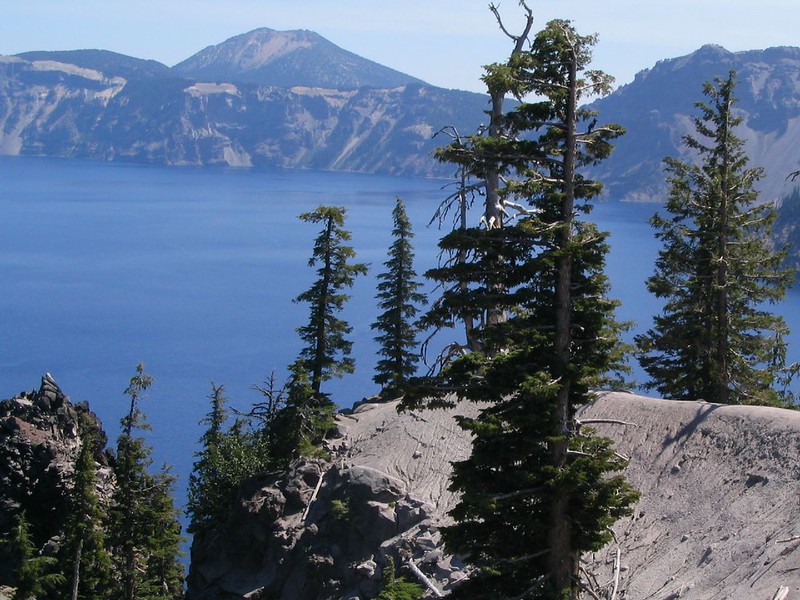
Discovery Point sits about 1.5 miles northeast of Rim Village, and it’s where the lake was first spotted by white explorers back in 1853. The viewpoint offers an unobstructed view of the entire caldera, but most visitors drive right past it on their way to more popular stops. You’ll find decent parking here and a short walk to the rim that’s much less crowded than the main areas. The perspective from this spot shows off the lake’s incredible depth better than almost anywhere else, making those deep blue waters look like they go on forever.
Garfield Peak
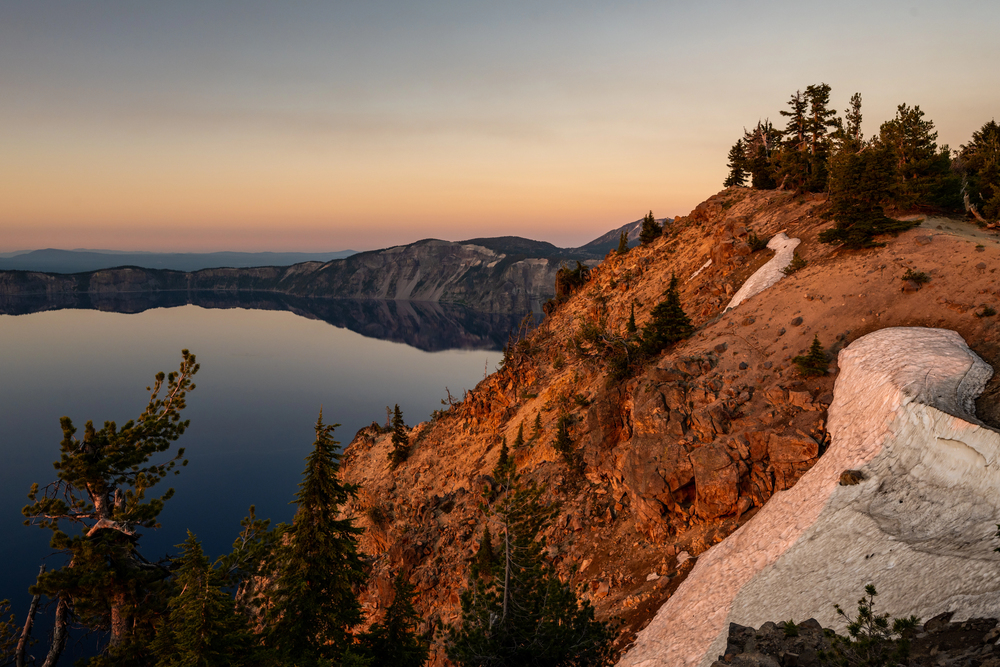
This viewpoint requires a 3.4-mile round-trip hike, which automatically weeds out about 80% of the casual visitors. The trail starts behind the Crater Lake Lodge and climbs about 1,000 feet through mountain hemlock and whitebark pine forests. Once you reach the top, you’ll understand why this spot was named after President James Garfield. The 360-degree views include not just the lake, but also Mount Shasta in California on clear days, plus the entire Cascade Range stretching north and south.
Phantom Ship Overlook
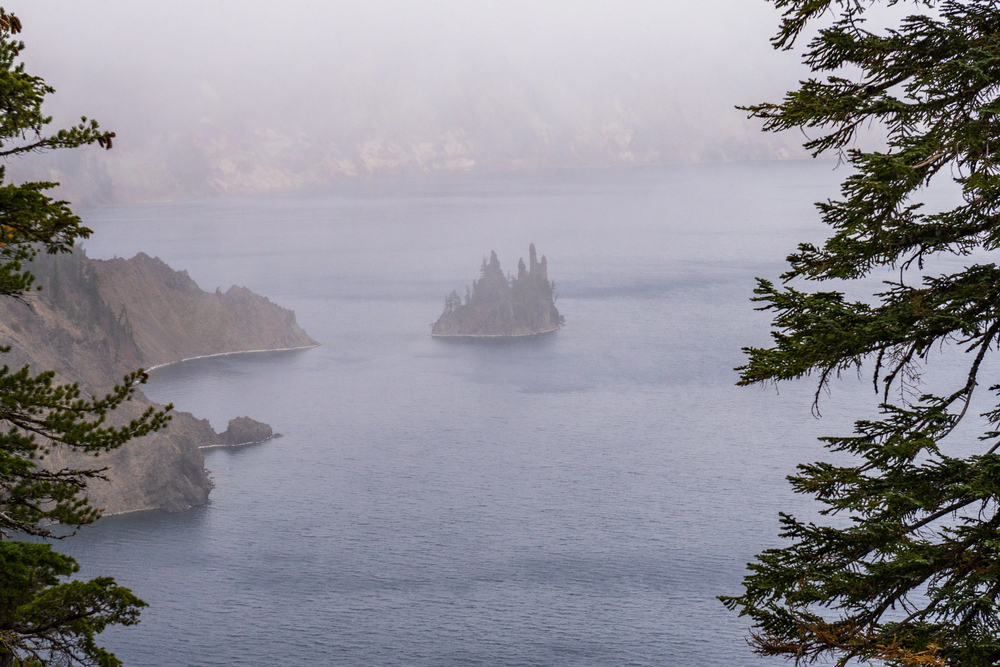
Located along the rim drive about 7 miles from the visitor center, this viewpoint gets overlooked because it doesn’t have the same obvious parking and signage as the main stops. The overlook gives you the best view of the Phantom Ship, a small rocky island that looks like a ghost ship sailing across the lake’s surface. Early morning or late afternoon lighting makes this formation absolutely spectacular, casting shadows that enhance the mysterious appearance. Most tour groups skip this spot entirely, so you’ll often have it completely to yourself.
Lightning Spring
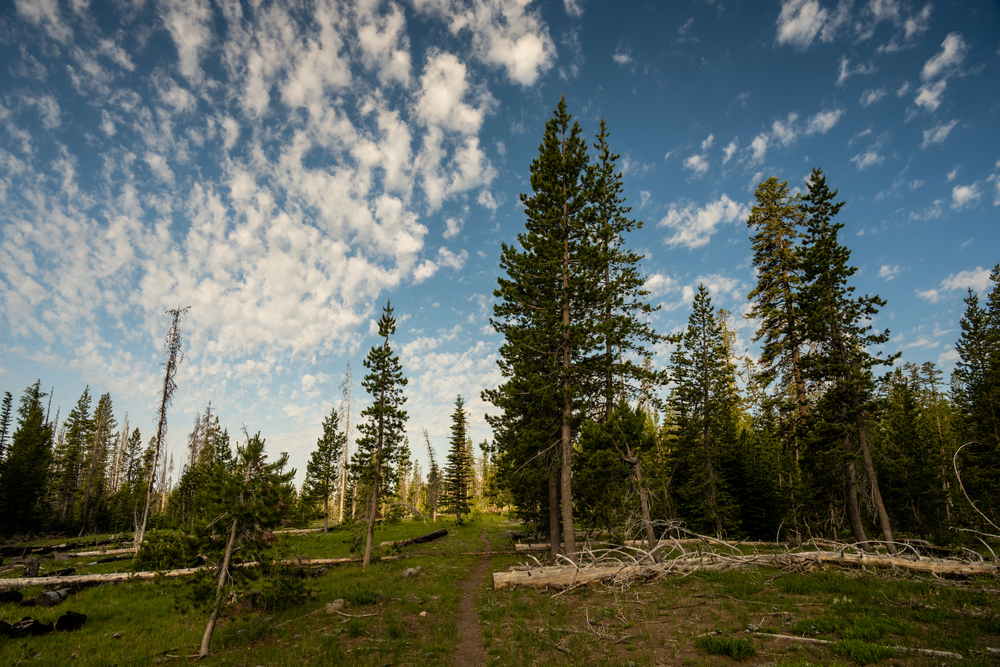
This hidden gem sits near the Pumice Desert area and requires a short off-trail walk to reach the rim. The spring itself is interesting, but the real prize is the unique angle it provides of the lake and Wizard Island. You’re looking at the scene from the north side, which gives Wizard Island a completely different profile than what you see from the standard viewpoints. The lack of crowds here means you can take your time capturing the perfect shot or just sit quietly and soak in the peaceful atmosphere.
Kerr Notch
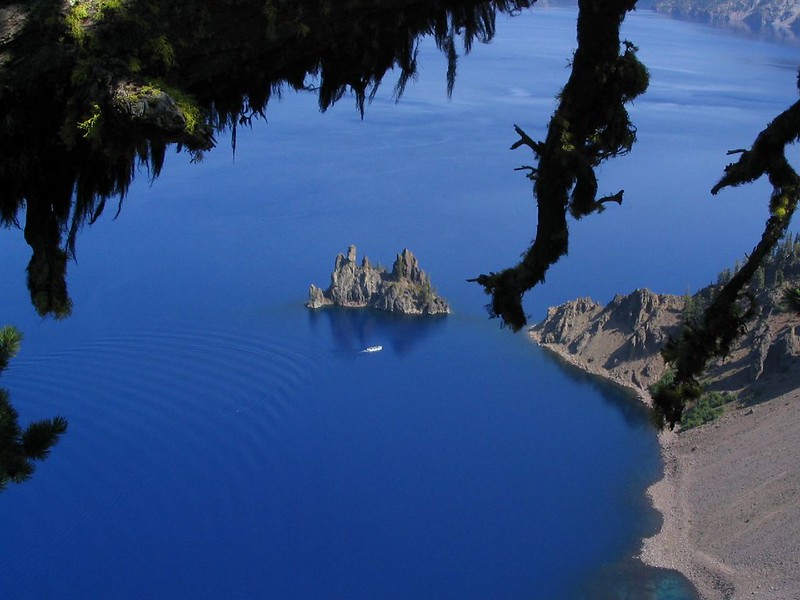
Most people drive right past this pullout on the east rim drive without giving it a second thought. The notch was carved by glacial action thousands of years ago, creating a natural window that frames the lake perfectly. It’s like nature installed its own picture frame specifically for photographers. The viewpoint works especially well during sunrise when the light hits the far rim and creates dramatic shadows across the water. You can park right at the rim here, making it accessible for people who can’t handle longer hikes.
Mazama Rock
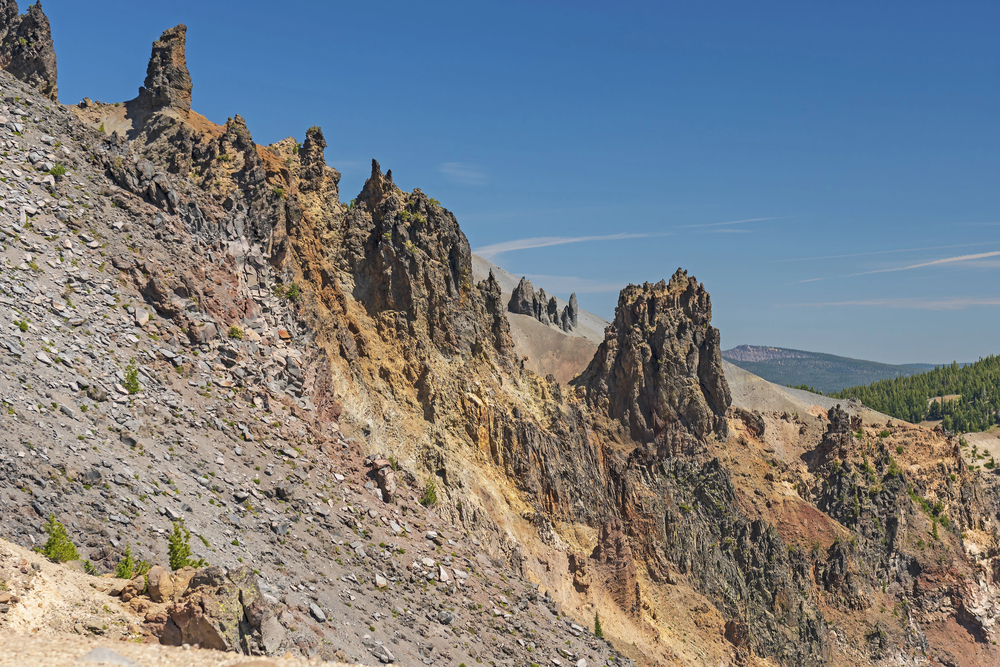
This viewpoint requires a bit of scrambling over volcanic rock, but the payoff is worth every careful step. Located on the southwest rim, Mazama Rock offers one of the most dramatic perspectives of the lake’s sheer walls. The rock formation itself tells the story of the mountain’s violent past, with layers of different volcanic eruptions clearly visible in the cliff face. Standing here, you really get a sense of the incredible forces that created this natural wonder around 7,700 years ago.
Llao Rock
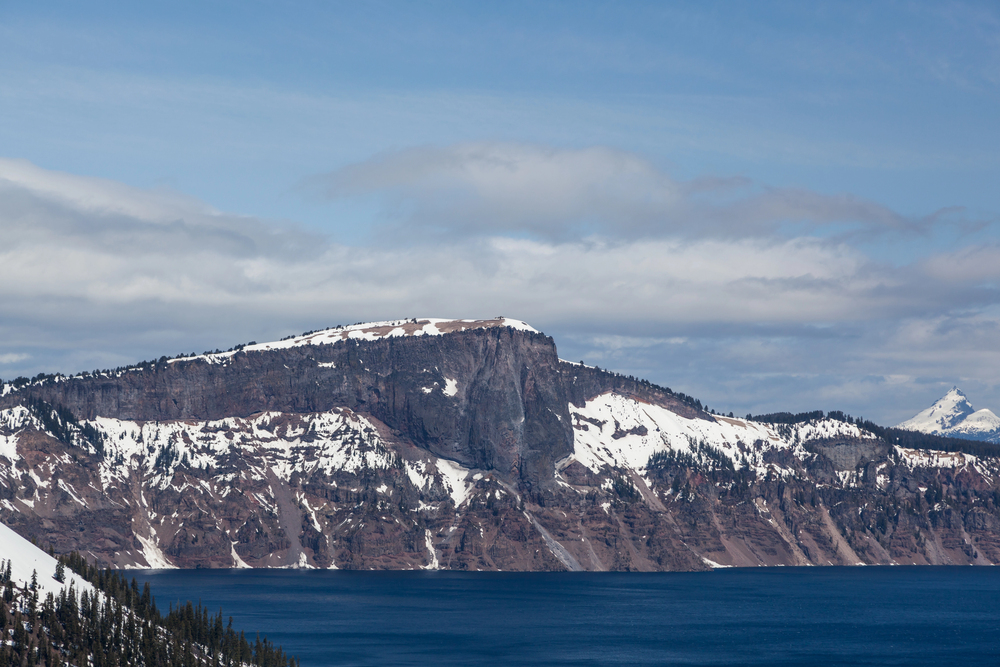
Named after the Klamath tribe’s spirit of the underworld, this viewpoint provides a commanding view from the north rim. The rock itself is a remnant of ancient lava flows, and climbing to its highest point gives you an eagle’s-eye view of the entire caldera. Most visitors see Llao Rock from other viewpoints across the lake, but actually standing on it flips the perspective completely. The view down into the lake from here makes you appreciate just how massive this volcanic crater really is.
Cloudcap Overlook
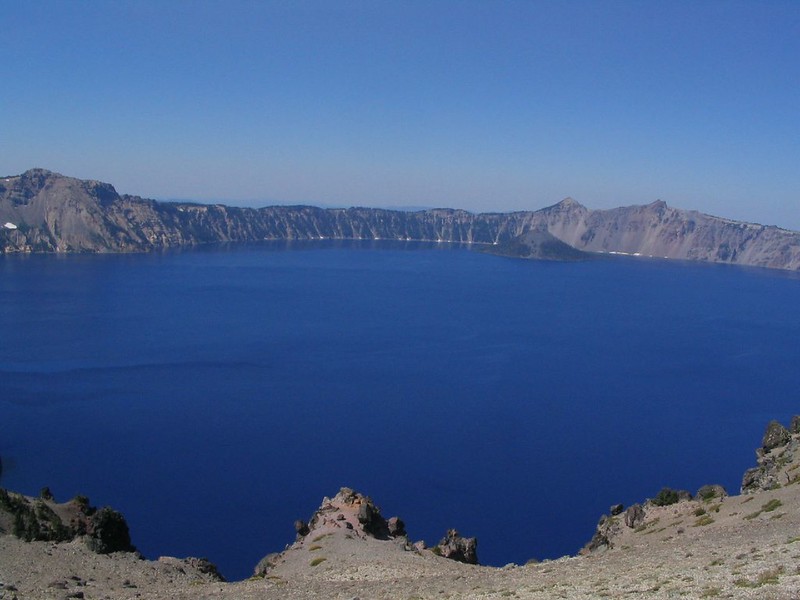
This spot on the east rim offers the highest vehicle-accessible viewpoint in the park at 8,065 feet above sea level. The overlook provides an incredible panoramic view that includes not just Crater Lake, but also Mount Scott, the Pumice Desert, and on clear days, mountains in three different states. Getting here requires driving the full east rim road, which many visitors skip in favor of the more popular west side attractions. The extra effort pays off with some of the most expansive views in the entire park.
Merriam Point
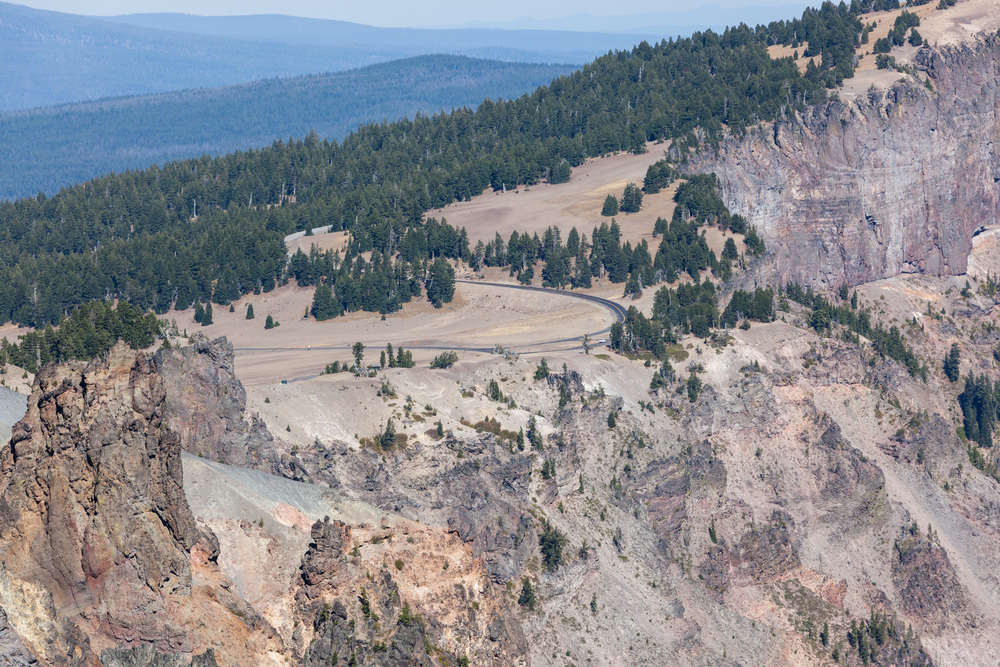
Located on the north rim, this viewpoint offers a unique perspective looking south across the lake toward Mount Scott. The point is named after C. Hart Merriam, a naturalist who studied the area’s wildlife in the late 1800s. What makes this spot special is how it frames Wizard Island against the backdrop of the lake’s south rim, creating a composition that’s completely different from the standard views. The relatively short walk from the parking area keeps it less crowded than the drive-up viewpoints.
Grotto Cove
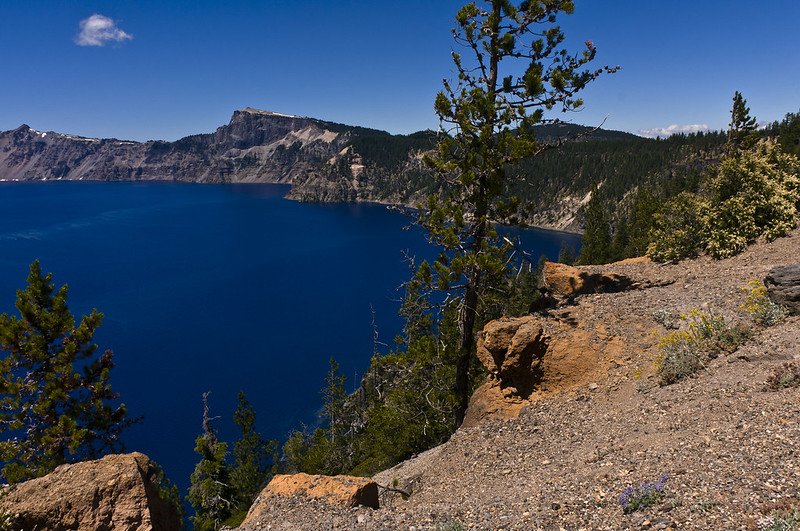
This hidden viewpoint requires a short hike down from the rim drive, but it’s one of the few places where you can get close to the lake’s edge. The cove itself is a small inlet carved into the volcanic rock, creating a natural amphitheater effect. Standing here, you’re surrounded by towering cliffs on three sides with the lake stretching out in front of you. The acoustics in this spot are incredible — you can hear sounds from across the lake with surprising clarity.
Sentinel Rock
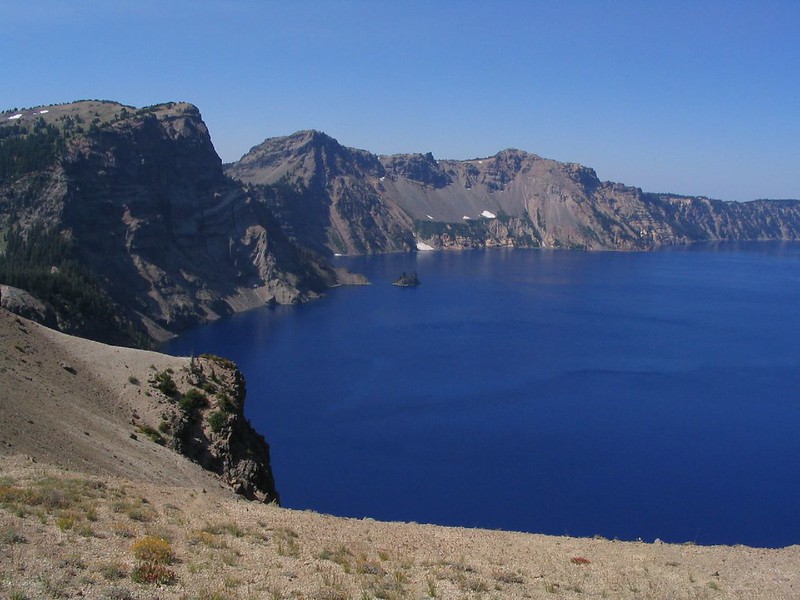
This viewpoint sits on a prominent rock formation that juts out from the west rim like a ship’s prow. The rock provides a natural platform that extends over the lake, giving you the feeling of floating above the water. Most people photograph Sentinel Rock from other viewpoints, but standing on it provides a completely different experience. The exposure here can be a bit intimidating for people with height issues, but the views are absolutely breathtaking for those who can handle it.
Pumice Castle
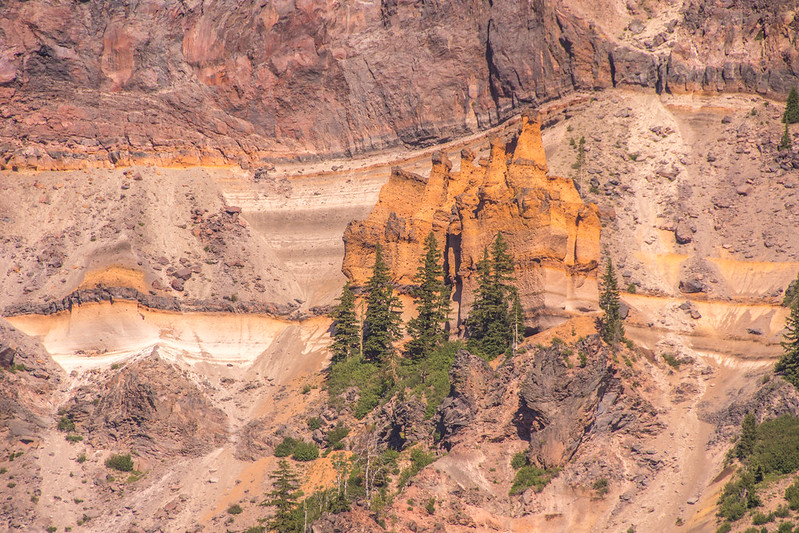
Located on the east rim, this viewpoint showcases not just the lake but also the fascinating geology of the area. The ‘castle’ is actually a formation of pumice and volcanic debris that’s been carved by erosion into tower-like shapes. From this vantage point, you can see layers of different volcanic eruptions in the cliffs across the lake, each one telling part of the mountain’s explosive history. The contrast between the delicate pumice formations and the massive lake creates a scene that’s both fragile and grand.
Skell Head
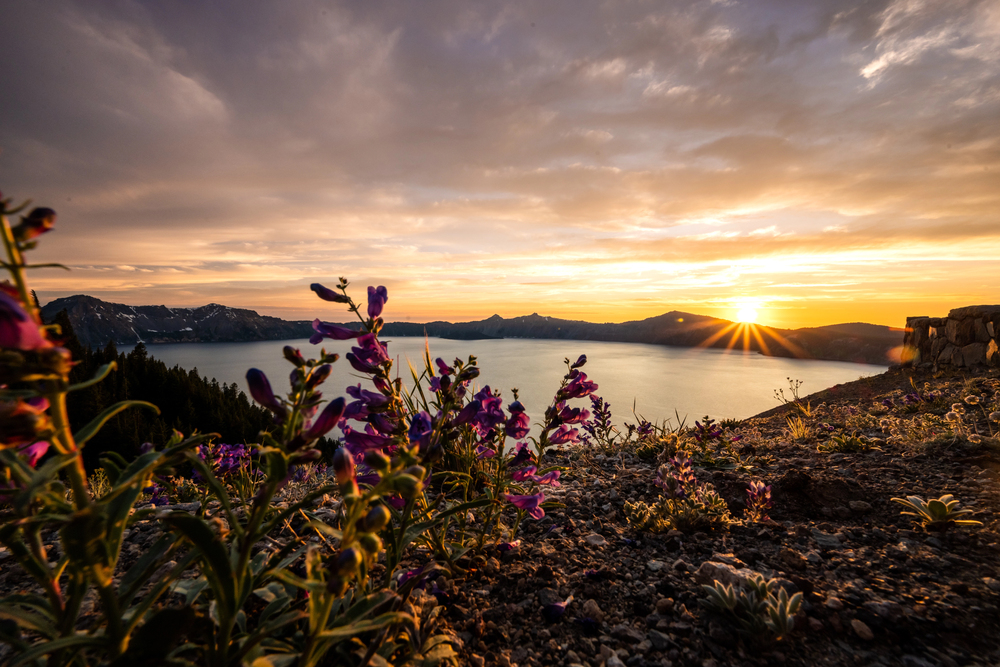
This viewpoint on the south rim offers one of the most dramatic perspectives of the lake’s western shore. Skell Head is named after the Klamath tribe’s sky god, and standing here, you can understand why they considered this place sacred. The viewpoint provides an unobstructed view of the lake’s deepest sections, where the water appears almost black in certain lighting conditions. The sheer scale of the cliffs from this angle really drives home how this ancient volcano collapsed in on itself.
Applegate Peak
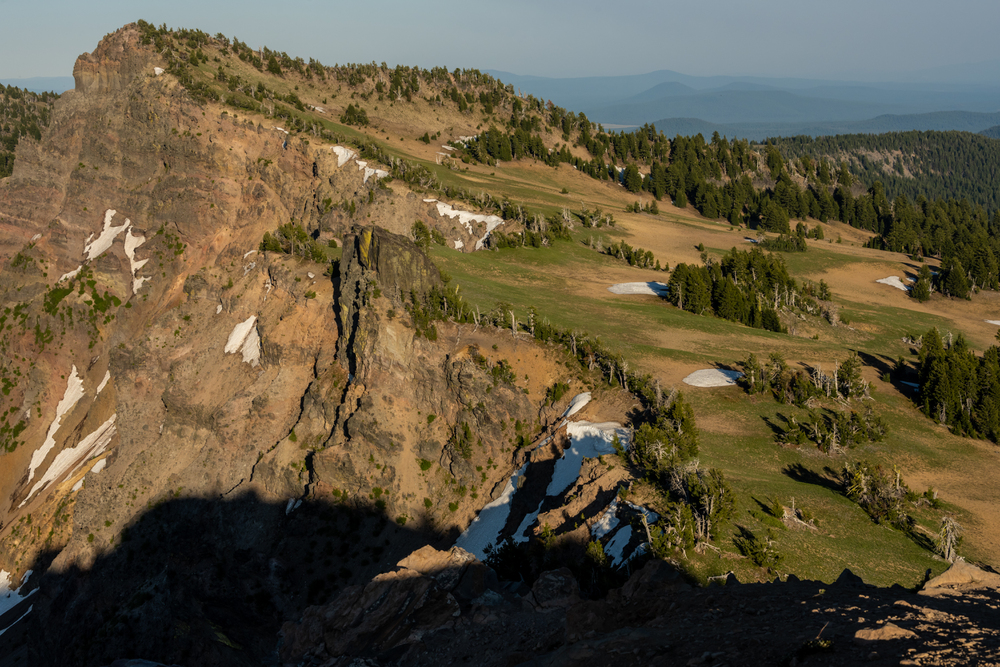
Getting to this viewpoint requires a moderate hike, but you’ll be rewarded with one of the most unique perspectives in the park. The peak offers a side-angle view of the lake that shows off its elliptical shape better than many other spots. From here, you can see how the lake isn’t perfectly round but actually follows the irregular outline of the collapsed volcano. The hike also takes you through some beautiful old-growth forest that most visitors never experience.
Palisade Point
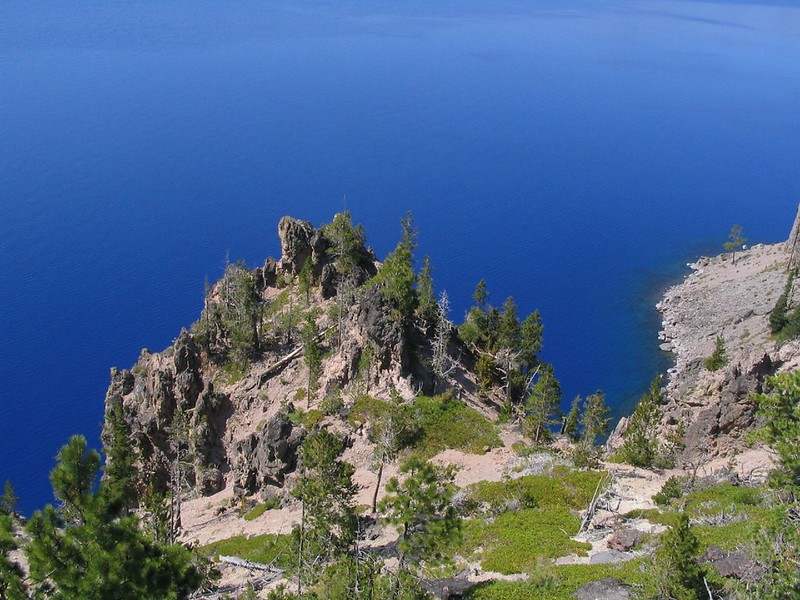
This viewpoint on the west rim provides a dramatic view of the lake’s eastern shore and Mount Scott. The point gets its name from the palisade-like rock formations that line this section of the rim. What makes this spot special is how the afternoon light hits the cliffs across the lake, creating a natural spotlight effect that changes throughout the day. The relatively easy access keeps it from being completely unknown, but it’s still much less crowded than the main attractions.
Chaski Bay
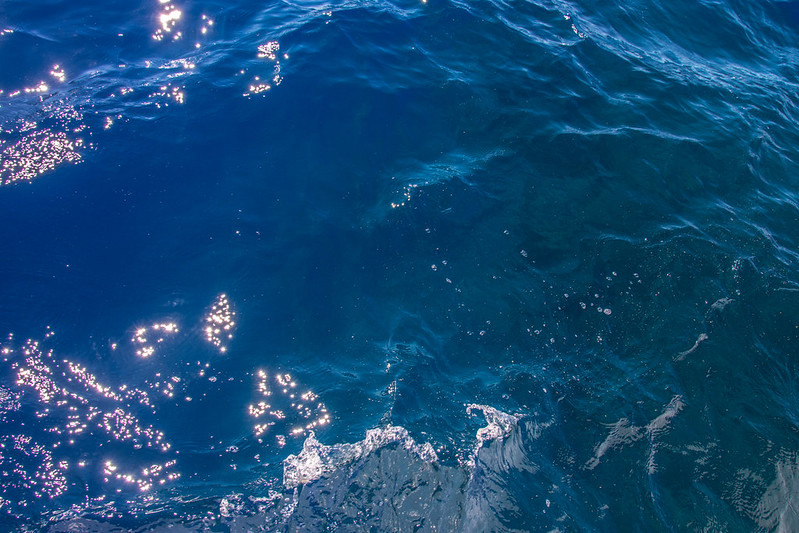
This viewpoint requires a short walk from the rim drive, but it offers one of the most intimate perspectives of the lake. The bay itself is a small indentation in the shoreline that creates a more enclosed feeling than the vast open views from other spots. Standing here, you’re close enough to the water to see details like the clarity of the lake and the steepness of the underwater cliffs. The protected nature of this spot also makes it a great place to escape the wind that can be brutal at other rim locations.
Timber Crater
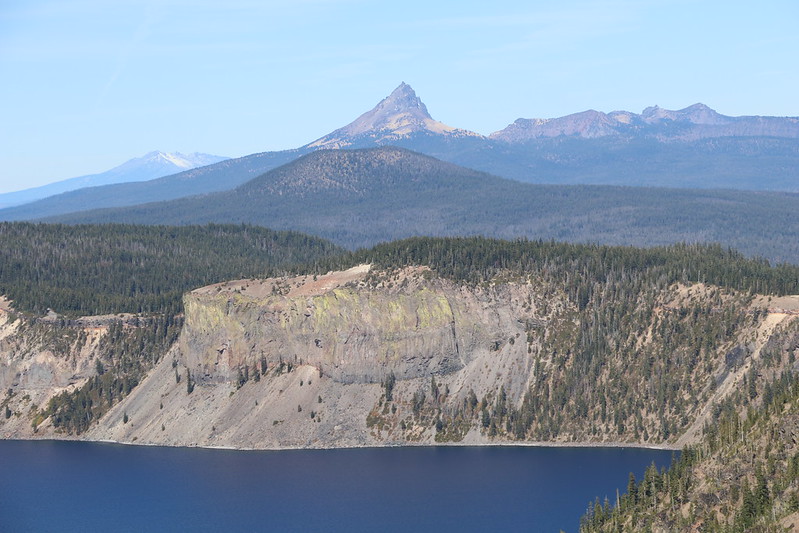
This lesser-known viewpoint sits on the rim between two more popular stops, making it easy to miss if you’re not looking for it. The crater itself is a small secondary volcanic formation that provides a natural amphitheater for viewing the lake. What makes this spot unique is how it frames the view with volcanic rock formations on both sides, creating a window effect that focuses your attention on specific parts of the lake. The geological diversity visible from this one spot tells the entire story of the area’s volcanic history.
Danger Bay
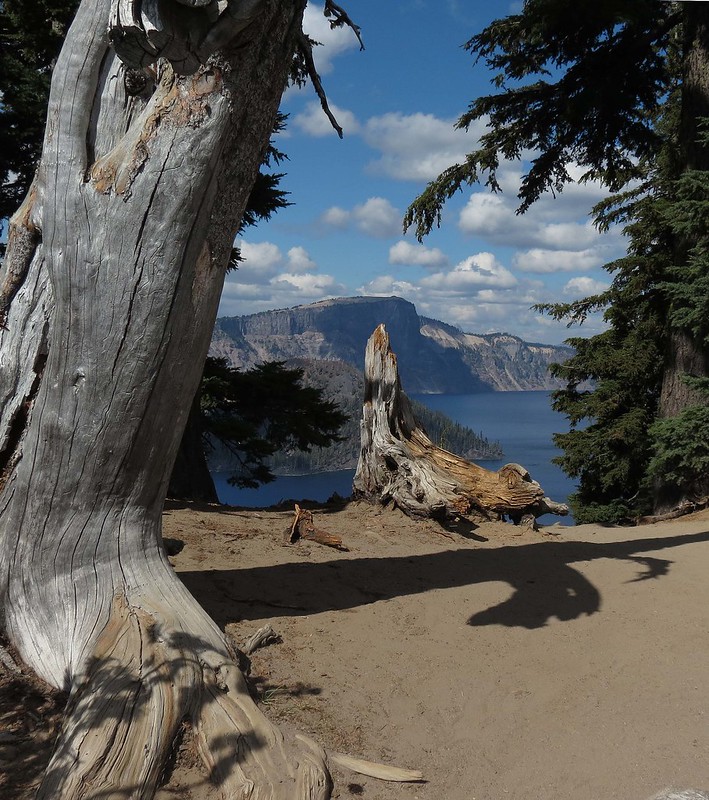
Despite its ominous name, this viewpoint is actually quite safe and offers one of the most peaceful perspectives in the park. The bay is a small inlet on the lake’s north shore that you can view from several points along the rim drive. What makes this spot special is how it shows the lake’s varying depths through different shades of blue water. The bay also provides some protection from the wind, making it a more comfortable spot for extended viewing or photography.
Devils Backbone
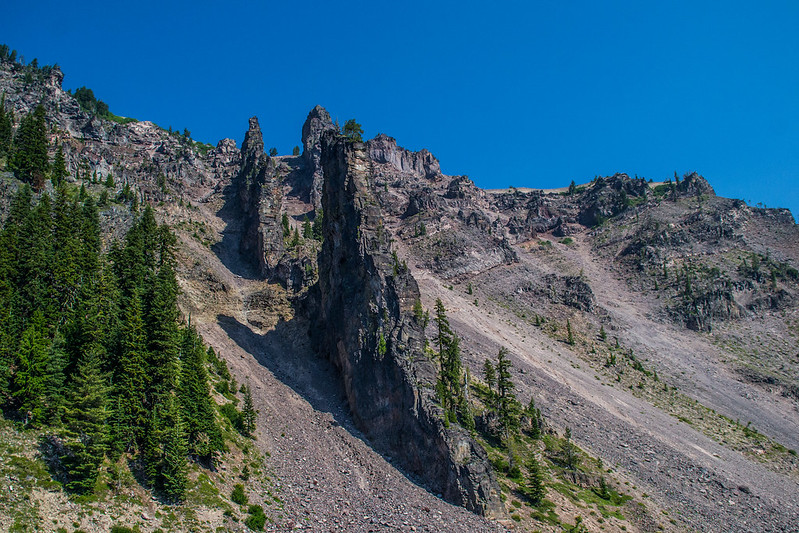
This dramatic viewpoint sits on a narrow ridge that extends into the lake like a spine. The formation got its name from early visitors who thought it looked like the backbone of some massive underground creature. Walking out on this ridge gives you the sensation of standing directly over the lake’s deepest sections. The 360-degree views from the end of the ridge include not just the lake, but also the surrounding forest and distant mountain peaks.
Lone Pine Point
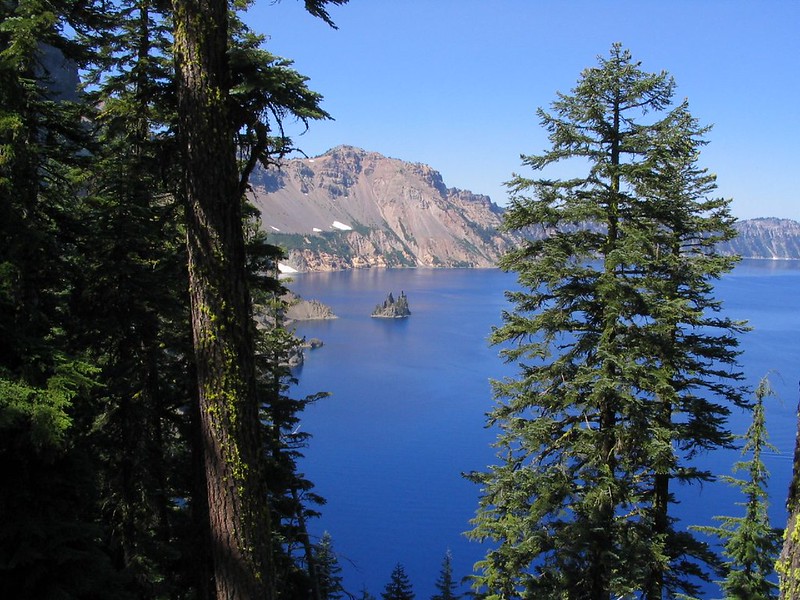
This viewpoint is marked by a solitary pine tree that somehow manages to grow right at the rim’s edge. The tree has become a landmark for photographers who use it to frame their shots of the lake. Beyond the photogenic tree, this spot offers a unique perspective of the lake’s southern sections and provides a great view of the underwater features that are visible through the incredibly clear water. The point is accessible by a short walk from the rim drive, but many visitors drive right past without noticing it.
Reflections of Ancient Fire
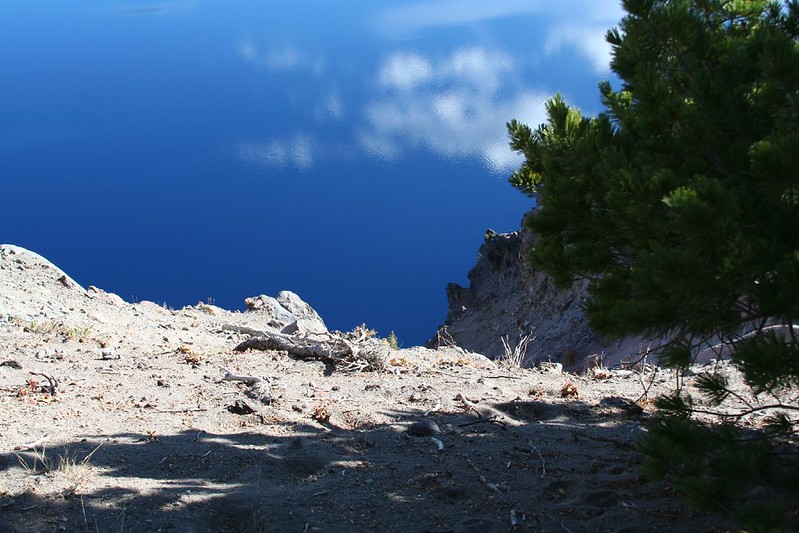
The beauty of these hidden viewpoints lies not just in their spectacular views, but in the stories they tell about one of nature’s most dramatic events. Each spot offers a different piece of the puzzle that was Mount Mazama’s collapse, from the geological formations that show the mountain’s violent past to the perspectives that reveal the lake’s incredible depth and clarity. While the main viewpoints certainly provide stunning views, these lesser-known spots offer something more valuable — a chance to connect with this ancient landscape without the crowds and commercialization. Next time you visit Crater Lake, skip the obvious stops and discover why the real magic happens when you venture beyond the beaten path.
More from Travel Pug

- 20 Best Beach Towns in the Carolinas
- 13 Destinations Where Tourists Regularly Regret Their Trip
- 20 Things You Actually Get in First Class
- 20 Small Airports With Aviation Museums
- 20 Places in the U.S. That Are Perfect for a Reset Trip
Like Travel Pug’s content? Follow us on MSN.
